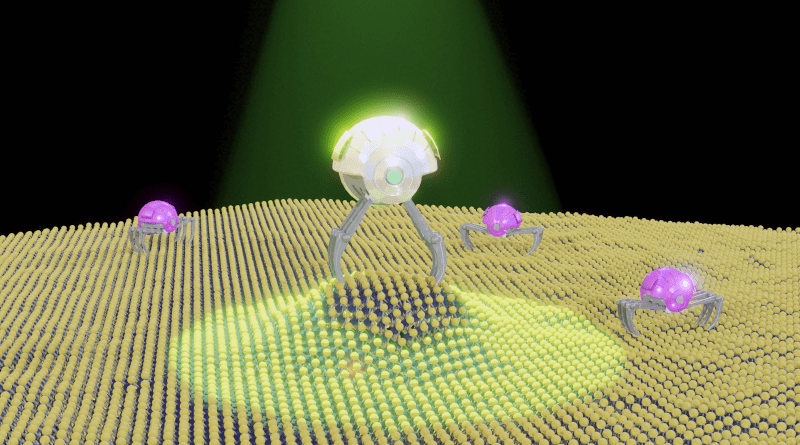Chemistry Paves Way For Development Of Intelligent Two-Dimensional Materials For Optoelectronics
A research team from the Institute of Molecular Science (ICMol) of the University of Valencia has just taken a step forward in the field of two-dimensional materials engineering. By incorporating molecular magnetic nanoparticles on the surface of a semiconductor 2D material, they have developed a new self-strainable 2D hybrid material that expands the potential of 2D materials for their application in optoelectronic devices and facilitates their large-scale production. The work has been published inNature Chemistry.
The optoelectronics market – electronic devices that interact with light, such as LEDs – is growing every day around the world. 2D materials, thanks to their large surface area, flexibility and unique physical or chemical properties, play a key role in the development of this market which is present in fields as diverse as lighting, power generation and storage, communication systems, catalysis, sensors or health.
Adjusting the electronic properties of two-dimensional materials using so-called ‘straintronics’ is one of the challenges of nanotechnology in this field. 2D materials withstand extraordinary deformations without breaking; they can be bent, stretched and subjected to voltages that allow them to modulate their properties, thus facilitating the manufacture of optoelectronic devices with new functionalities.
In recent years it has been shown that the strain generated by deforming MoS2(Molybdenum Disulfide) monolayers changes the properties of electronic devices based on this 2D material. Commonly, this deformation is externally applied on the material. Now, a research team from the Institute of Molecular Science of the University of Valencia has shown that the anchoring of certain molecular-based magnetic nanoparticles on 2D materials can lead to a new family of self-strainable 2D heterostructures, in which the application of an external stimulus is capable of causing this strain.
The work, published inNature Chemistry, describes the preparation of a hybrid material in which the strain generated at the molecular level on the MoS2layers leads to a reversible change of its electrical and optical properties.
Specifically, to achieve this strain, intelligent magnetic nanoparticles capable of transiting between two spin states, which present different volumes, have been used, by applying external stimuli such as temperature and light. This serves to generate strain on the MoS2layer and thus produce a substantial and reversible change in its electronic properties. “While the effects of strain on 2D materials were already known, we have now managed to synthesise a hybrid system in which the material itself self-strains under the action of an external stimulus”, says Alicia Forment-Aliaga (Inorganic Chemistry Department-UV), researcher at the ICMol and one of the authors of the study. “This would allow us to prepare inks of these systems that facilitate the application of the strain on the 2D materials in different types of devices”, she adds.
“This result highlights the role of Chemistry in the area of two-dimensional materials, as it illustrates how the mechanical and electronic properties of a 2D material can be controlled by anchoring intelligent functional molecules on the 2D material, an unexplored possibility in electronics based on 2D materials”, concludes Eugenio Coronado, professor of Inorganic Chemistry at the University of Valencia, researcher at ICMol and co-responsible for the project.
The work has been developed in the framework of the ERC Advanced Grant Mol-2D ‘Molecule-induced control over 2D materials’.

